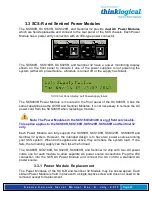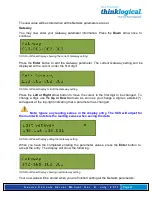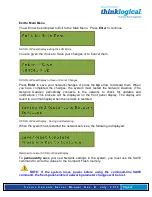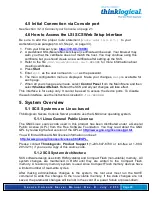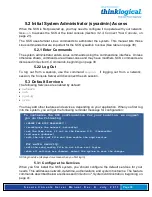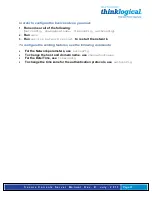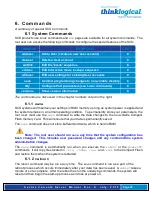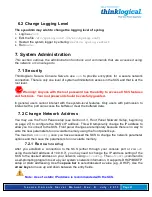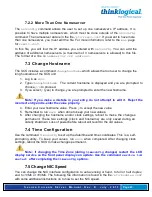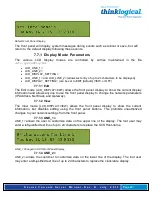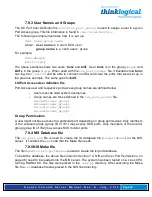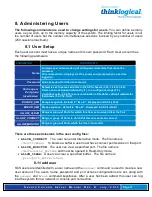
S e c u r e C o n s o l e S e r v e r M a n u a l , R e v . K , J u l y , 2 0 1 3
Page 36
5.2 Initial System Administrator (sysadmin) Access
When the SCS is first powered up, you may need to configure it to operate with your network.
Use
ssh
to access the SCS or the local console (Section 3.2.4, Connect Your Console, on
page 21).
The SCS uses familiar Linux commands to administer the system. This manual lists those
Linux commands that are important for the SCS sysadmin to know (See table on page 38).
5.2.1 Enter Commands
The system administrator enters Linux commands using the command-line interface. Unless
otherwise shown, commands are all lower-case and may have modifiers. SCS commands are
discussed in Section 6, Commands, beginning on page 38.
5.2.2 Log Out
To log out from a session, use the command
logout.
If logging out from a network
session, the Console Server will disconnect the ssh
session.
5.3 Default Services
The following Services are enabled by default:
•
network
•
ssh
•
syslog
•
cron
You may add other features and services, depending on your application. When you first log
into the system, you will get the following reminder message for configuration:
To customize the SCS configuration for your location, we suggest
you do the following:
∗
CHANGE THE ROOT PASSWORD!!!
∗
reconfigure the network (netconfig)
∗
set the time zone, if not in the Eastern U.S. (timeconfig)
∗
add users (adduser)
∗
edit the ntp.conf file and then enable the ntpd service
For extra security:
∗
edit the sshd_config file to not allow root logins
∗
when all settings are changed, reboot the system to save the changes
SCS login advice (displayed on-screen when you first log in)
5.3.1 Configure the Services
When you first install the SCS system, you should configure the default services for your
needs. This addresses network, date/time, authorizations and system hostname. The feature
commands described below are discussed in Section 7, System Administration, beginning on
page 41.


